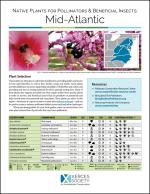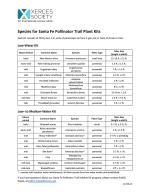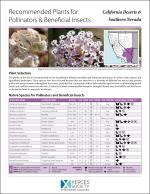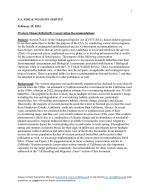As a science-based organization, the Xerces Society produces dozens of publications annually, all of which employ the best available research to guide effective conservation efforts. Our publications range from guidelines for land managers, to brochures offering overviews of key concepts related to invertebrate conservation, from books about supporting pollinators in farmland, to region-specific plant lists. We hope that whatever you are seeking—whether it's guidance on making a home or community garden pollinator-friendly, advice on developing a local pesticide reduction strategy, or detailed information on restoring habitat—you will find it here!
Find Publications
Use the search functions to sort by publication type (books, guidelines, fact sheets, etc.), location, and/or subject (agriculture, gardens, pollinators, pesticides, etc.).
Identify native plants that attract native pollinators and beneficial insects in the Mid-Atlantic region.
Identify native plants that attract native pollinators and beneficial insects in Florida.
Identify native plants that attract native pollinators and beneficial insects in the Great Lakes region.
This information sheet has details of the plant species included in the Pollinator Habitat Kits for the Santa Fe (NM) Pollinator Trail.
for Pollinators and Beneficial Insects
The plants in this list are recommended for use in pollinator habitat restoration and enhancement projects in urban, rural, natural, and agricultural landscapes in the California Deserts and Southern Nevada.
A simplified handout explaining how to talk to a plant vendor to find out if their plants are pollinator-safe when it comes to pesticides.
California
This information sheet has details of the plant species included in the California Monarch and Pollinator Habitat Kits, an overview of the habitat kit project, and guidance on how to request a kit.
(U.S. Fish and Wildlife Service)
Conservation recommendations from the U.S.
By Rich Hatfield, Ann Potter (WDFW), and Joel Sauder (IDFG)
Bumble bees are charismatic and easily recognizable pollinators thanks to their large size and distinctive striped patterns, usually of black and yellow, but often with stripes of red, orange, or white. They play an incredibly important role in keeping our environment healthy by pollinating flowers in natural areas and by contributing to successful harvests on farms.
In the past twenty years, only 15 species of bumble bees have been observed in Nebraska, five fewer species than historically recorded between 1800–2001. The most immediate and productive steps that we can take to conserve these imperiled pollinators is to intentionally manage and restore existing habitat and/ or create additional habitat. The recommendations in this guide combine the latest understanding of bumble bee habitat needs with lessons learned from the Nebraska Bumble Bee Atlas (NEBBA).










